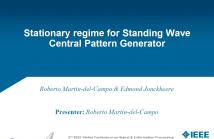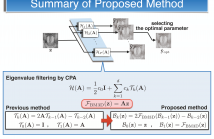
The IEEE Global Conference on Signal and Information Processing (GlobalSIP) is a flagship conference of the IEEE Signal Processing Society. GlobalSIP'15 will be held in Orlando, Florida, USA, December 14-16, 2015. The conference will focus on signal and information processing with an emphasis on up-and-coming signal processing themes. The conference will feature world-class speakers, tutorials, exhibits, and sessions consisting of poster or oral presentations. Outstanding papers will be selected for Best Paper Awards or Best Student Paper Awards; a paper is eligible for a best student paper award if the first author of the paper is a student. IEEE Signal Processing Society and National Science Foundation will provide travel grants to eligible students.
- Read more about Nonsmooth Optimization for Optimal Power Flow over Transmission Networks
- Log in to post comments
- Categories:
 8 Views
8 Views- Read more about User Association in Small Cell Heterogeneous Network with Downlink Sum Rate
- Log in to post comments
Mixer2015.pptx
- Categories:
 15 Views
15 Views- Read more about 2015GlobalSIP_Outage Probability for Two-Way Solar-Powered Relay Networks with Stochastic Scheduling
- Log in to post comments
- Categories:
 4 Views
4 Views
- Read more about Stationary regime for Standing Wave Central Pattern Generator
- Log in to post comments
The purpose of this research is to show that the spatio-temporal analysis on surface Electromyographic (sEMG) signals that originally confirmed existence of a standing wave Central Pattern Generator (CPG) along the spine are reproducible under less than ideal conditions and despite evolution of the entrainment technique, different hardware and data collection protocol. This analysis reveals a coherence at a distance between sEMG signals, which because of its large scale reproducibility could become a test for properly functioning Central Nervous System.
- Categories:
 24 Views
24 Views- Read more about Sparse Index Multiple Access
- Log in to post comments
In this paper, we consider sparse index modulation (SIM) for precoded orthogonal frequency division multiplexing (OFDM) and its generalization to multi-carrier multiple access systems. The resulting multiple access is called sparse index multiple access (SIMA). SIMA can be seen as a combination of multi-carrier code division multiple access (MC-CDMA) and SIM. Thus, SIMA is able to exploit a path diversity gain by (random) spreading over multiple carriers as MC-CDMA.
g_sip15.pdf
- Categories:
 5 Views
5 Views- Read more about Optimal Pricing for Interference Control in Time-reversal Device-to-Device Uplinks
- Log in to post comments
The Device-to-Device (D2D) communication is a promising technique to empower local wireless communications. However, without proper management it may generate interference to the existing network and degrade the overall performance. By treating each multipath as a virtual antenna, time-reversal (TR) signal transmission in a rich-scattering environment produces a spatial-temporal resonance which efficiently suppresses the inter-user interference (IUI) while boosting the signal power at the target receiver.
- Categories:
 22 Views
22 Views- Read more about Wireless Network Recommendation System in Heterogeneous Networks
- Log in to post comments
- Categories:
 14 Views
14 Views- Read more about Interference Model and Analysis on Device-to-Device Cellular Coexist Networks
- Log in to post comments
Device-to-device (D2D) communications can enhance the overall system capacity by reusing cellular spectrum, which at the same time leads to severe interference to cellular connections and vice versa. In practice, even when two wireless connections share the same spectrum, the interference between them may not always exist if there is no conflict at packet-level transmissions. Thus, in this paper, we establish a cross-layer model for D2D communications underlaying cellular network to characterize the realistic interference scenario.
- Categories:
 6 Views
6 Views- Read more about Handling High Level of Censoring For Endovascular Aortic Repair Prediction
- Log in to post comments
- Categories:
 6 Views
6 Views
- Read more about Globalized BM3D using fast eigenvalue filtering
- Log in to post comments
- Categories:
 80 Views
80 Views